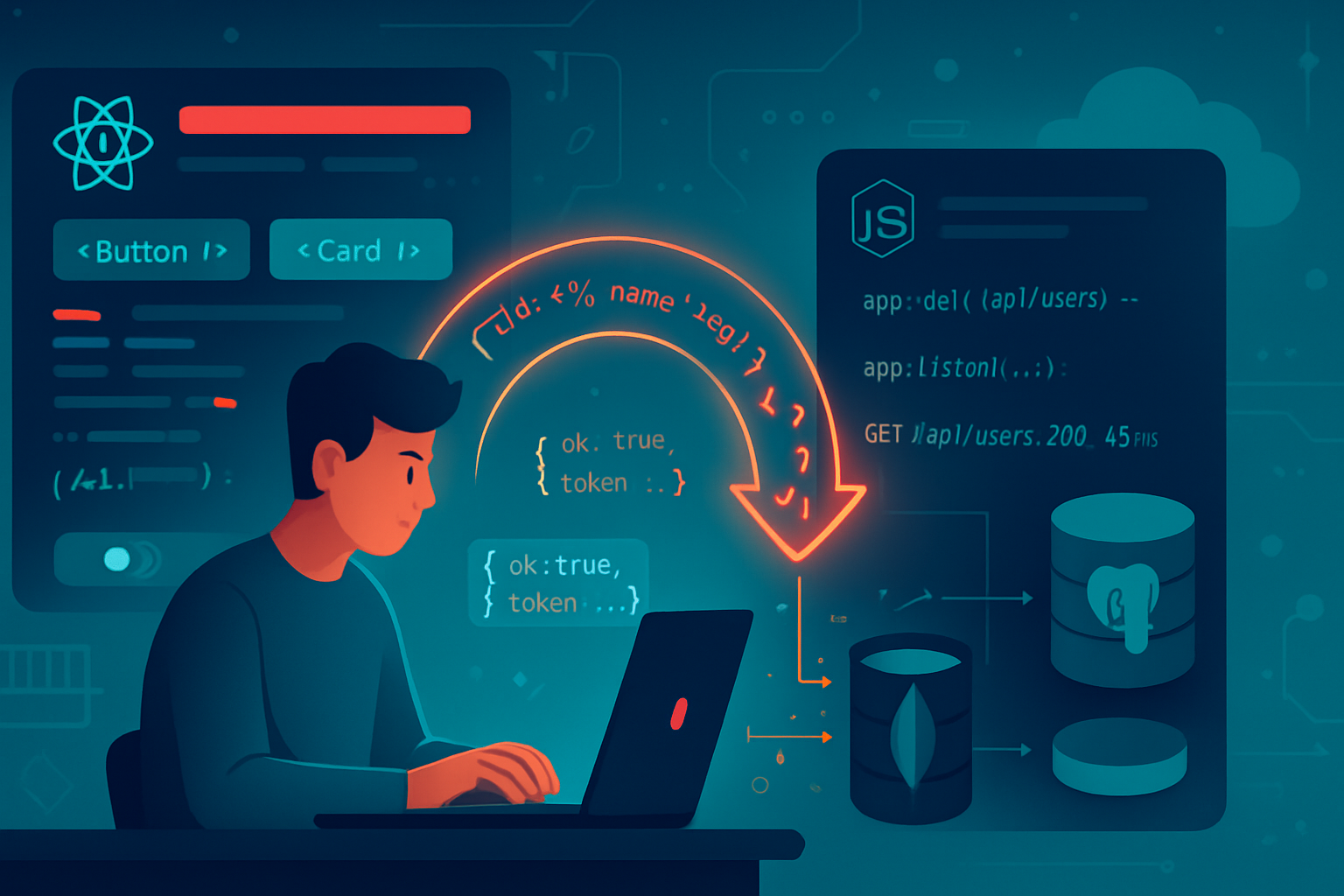· career · 8 min read
The JavaScript Engineer’s Essential Toolbox: Skills and Tools for the Next Decade
A practical, forward-looking playbook for JavaScript engineers: core skills, emergent runtimes, architecture patterns, and lesser-known tools that separate commodity devs from future-proof engineers.

Outcome - by the end of this article you’ll have a pragmatic, prioritized map of the skills and tools that will let you architect, build, and ship resilient JavaScript systems for the next decade. You won’t get a list of buzzwords. You’ll get a toolbox and a path to mastery.
Why this matters. JavaScript is not just a browser language anymore. It powers servers, edge functions, native apps, databases, and even machine learning pipelines. The landscape moves fast. But the engineers who thrive are the ones who can see patterns across platforms and pick the right abstractions. This piece is opinionated. It challenges conventional wisdom and highlights lesser-known technologies and practices that will give you a competitive edge.
What’s different about the next decade
- Runtimes multiply. Node.js will continue to be important - but Deno and Bun are no longer curiosities; they are performance and developer-experience platforms worth learning. See Deno and Bun for details.
- Edge-first architecture will be mainstream. More apps run logic closer to users via Cloudflare Workers, Fastly, or V8-based edge runtimes.
- WebAssembly (WASM) becomes a first-class integration point, not a niche optimization.
- Observability, SLO-driven development, and privacy-by-design will be hiring filters for senior roles.
These shifts mean more than learning new APIs. They demand a mindset change: pick tools that let you reason about latency, security, and cost at global scale.
Core fundamentals - the non-negotiables
Master these first. They’re the foundation every employer expects.
- Deep JavaScript: asynchronous patterns (promises, async/await, event loop), memory model basics, modules, and newer language features. Learn the runtime behaviors, not just syntax. MDN JavaScript docs are an excellent reference.
- TypeScript: strict typing, utility types, declaration files, and type inference. TypeScript is no longer optional for large codebases. Official site: TypeScript.
- HTTP and networking fundamentals: TLS, CORS, caching headers, CDNs, and HTTP/2/3 basics.
- Algorithms & data structures: pragmatic knowledge for system design and performance tuning.
Why TypeScript? It’s the single biggest multiplier for team productivity and maintainability. If you haven’t migrated your main projects, start now.
Modern tooling and build chain (what to actually use)
The last few years saw a tooling revolution. Learn these tools and understand trade-offs:
- Fast bundlers and compilers: Vite (dev server) + esbuild or SWC (compilation) for speed. Vite, esbuild, SWC.
- Package managers: pnpm for disk-efficient, deterministic installs. pnpm dramatically reduces node_modules pain.
- Monorepo orchestration: Turborepo or Nx to scale projects across teams. Turborepo, Nx.
- New runtimes: learn Node.js internals but also get hands-on with Deno and Bun for speed and modern APIs. Deno, Bun.
Why this combo? Faster feedback loops let you experiment. pnpm and modern bundlers reduce CI costs and developer friction. New runtimes are not just faster; they change deployment and security models.
Runtimes and hosting - where your code executes
Think beyond VPS.
- Serverless (AWS Lambda, Azure Functions): great for event-driven workloads and cost control at small to medium scale. But study cold starts, observability, and idempotency.
- Edge computing (Cloudflare Workers, Fastly Compute@Edge): move logic to the edge to shave off milliseconds. Cloudflare Workers is a leading example: Cloudflare Workers.
- Hybrid and multi-runtime: build components that can run in different environments (edge for low-latency routing and classic servers for heavy compute).
- Consider Deno Deploy or Bun runtime for certain microservices - lower startup time and fewer platform quirks.
Data, storage, and patterns for modern apps
The right datastore is a product decision. Learn these paradigms:
- Polyglot persistence: relational (Postgres), document (MongoDB), search (Elasticsearch/Opensearch), and graph when required. Know why each exists.
- Serverless and edge-native databases: Fauna and EdgeDB are interesting entrants for single-region, transactional guarantees and developer ergonomics. Fauna, EdgeDB.
- Real-time: WebSockets, WebTransport, and WebRTC for peer and server-to-server real-time flows. WebRTC is increasingly used beyond browsers.
- Event-driven design: message brokers, event sourcing, and CQRS for large systems. Learn patterns like transactional outbox to keep data and events consistent.
Architecture patterns and hard-won trade-offs
Stop optimizing for the latest framework. Start optimizing for maintainability, latency, and operability.
- Micro-frontends when teams need independent release velocity - but avoid them for teams that don’t need that complexity.
- Backend for Frontend (BFF) to tailor APIs to client needs - especially useful with diverse clients (mobile, web, edge).
- Composition over monoliths: prefer small composable services with clear contracts, but implement shared libraries for common logic to avoid duplication.
- Strong API contracts: OpenAPI and GraphQL have different trade-offs. GraphQL is great for front-end agility; OpenAPI shines for strict typing and autogenerated clients. GraphQL docs.
Performance, profiling, and user-centric metrics
You will be judged by the experience you deliver. Measure it.
- Real User Monitoring (RUM) and synthetic testing: combine both. Tools: WebPageTest, Lighthouse. WebPageTest, Lighthouse.
- Web vitals: LCP, FID/INP, CLS. Optimize server response times, streaming, and critical rendering path.
- Use streaming and partial hydration for faster perceived performance. Consider SSR + streaming (React, SvelteKit, Next.js ISR patterns).
Observability and SLO-driven development
Logging alone is not enough. Build systems you can operate.
- Traces, metrics, and logs: instrument with OpenTelemetry. OpenTelemetry
- SLOs and error budgets: let them guide prioritization and capacity planning.
- Distributed tracing: learn to trace requests across services, including edge functions and third-party APIs.
When interviewing for senior roles, be prepared to explain your SLOs and how you measured them.
Security, privacy, and compliance
Security is a feature. Ship less vulnerable code.
- Threat modeling: understand attack surface, authentication (OAuth, JWT), and secure defaults.
- Supply chain security: pin dependencies, use reproducible builds, and monitor packages for vulnerabilities.
- Privacy by design: minimize PII collection, use client-side hashing, and apply data retention policies.
Testing and quality at scale
Testing is both safety net and documentation.
- Types first: TypeScript + typesafe APIs reduces whole-class of errors.
- Testing pyramid: unit tests, integration tests, and end-to-end tests with Playwright or Playwright. Playwright is excellent for browser automation and robust e2e testing.
- Contract testing: Pact or schema-driven tests for services with many clients.
Lesser-known, high-leverage technologies to learn now
These are not yet ubiquitous - but they will be differentiators:
- WebAssembly as a first-class citizen: use Rust or AssemblyScript to implement CPU-heavy modules (image processing, codecs, cryptography). WebAssembly
- Bun as a full-stack runtime and package manager alternative offering massive speed advantages for start and dev server times. Bun
- Deno’s integrated tooling (bundler, linter, test runner) and secure-by-default model. Deno
- Edge-native databases and serverless transactions (Fauna, EdgeDB).
- SWC and esbuild replacing Babel in many cases for order-of-magnitude build speed gains.
Picking one of these and building something production-ready will make you stand out.
AI, LLMs, and the new developer ergonomics
Large models change how engineers work.
- Use AI as a force multiplier: code generation (Copilot-like), automated refactors, test generation, and triage assistants.
- Learn prompt engineering and safety - especially if you integrate LLMs into user-facing features. OpenAI
- Explore on-device or edge ML for privacy-sensitive features; WASM + small models can run inference without server roundtrips.
AI is not a replacement for craft. It amplifies engineers who already practice good architecture and testing.
Developer experience and productivity practices
Small practices lead to big outcomes.
- Codebases: keep dependency trees shallow, enforce linting and formatting (ESLint, Prettier), and adopt commit hooks.
- Local dev parity: use containers and dev environments that mimic production (GitHub Codespaces, DevContainers).
- CI that runs fast: split tests, use caching (pnpm store cache), and incremental builds (Turborepo cache).
Soft skills and career strategies
Technical skill is necessary but not sufficient.
- System design and architecture: document decisions, own trade-offs, and write clear RFCs.
- Communication: be able to explain complex designs to non-engineers and mentors.
- Contribution: open source or internal shared libraries show ownership and scale.
- Interview prep: implement real features end-to-end and be able to walk through your design choices, trade-offs, and metrics.
A practical learning roadmap (12–36 months)
Month 0–6: Fundamentals
- Deep JavaScript and TypeScript mastery.
- Build 2 projects: a server-rendered app and a small API.
- Use Vite + pnpm and set up CI.
Month 6–18: Systems and runtimes
- Ship an app to the edge (Cloudflare Workers) and a microservice in Deno or Bun.
- Implement observability (OpenTelemetry) and set SLOs.
- Learn WebAssembly by writing one module in Rust.
Month 18–36: Scale and leadership
- Lead a small project that uses event-driven architecture and real-time features (WebRTC or WebSockets).
- Own the testing and release process, implement SLO-based changes, and mentor juniors.
Checklist: Ship-ready skills and tools
- JavaScript (advanced), TypeScript (strict mode)
- Vite, esbuild/SWC, pnpm
- Deno or Bun (pick one to master)
- Edge functions (Cloudflare Workers) and serverless fundamentals
- OpenTelemetry, RUM, SLOs
- WebAssembly basics (and at least one module)
- Strong testing setup: unit, integration, Playwright e2e
- Observability and security posture
- Portfolio of 2–3 open-source or public projects demonstrating full-stack ownership
Final advice - a contrarian nudge
Don’t optimize only for the most popular framework or the highest job count today. Optimize for mobility and resilience: learn the runtime, the network, and the operational primitives. Learn to measure the user experience and take responsibility for it.
The frameworks will change. The need to design resilient, observable, and fast systems will not. Master the primitives, and you won’t be chasing the next trend. You’ll be shaping it.
Start small. Build, measure, iterate. Then scale what works. If you do this, your career will not just survive the next decade - it will lead it.



